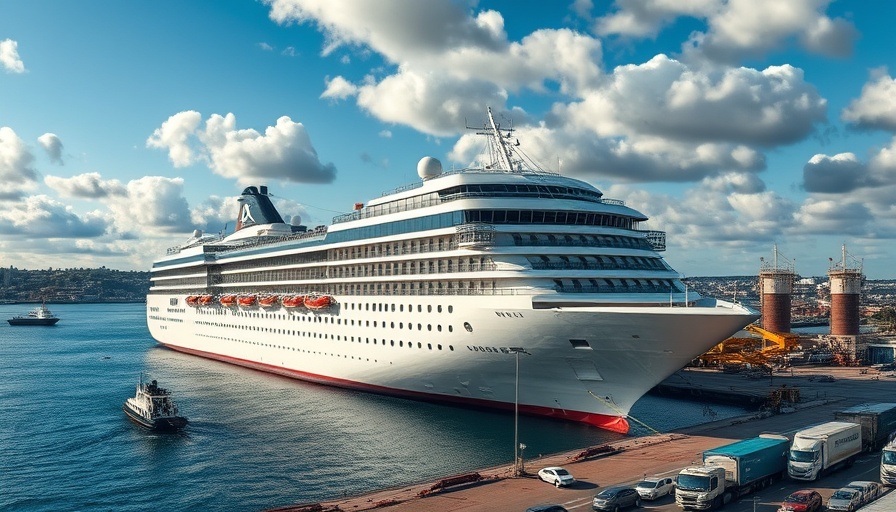
The Dawn of LNG Bunkering at Port Canaveral
The recent LNG bunkering operation at Port Canaveral marks a significant milestone in the cruise industry. JAX LNG and Polaris New Energy successfully supplied Royal Caribbean's latest vessel, the Star of the Seas, with liquefied natural gas (LNG), highlighting the move towards cleaner, more sustainable fuel sources in maritime operations. This operation not only underscores the capabilities and safety of contemporary bunker supplies but also reveals the growing importance of environmental considerations within the cruise sector.
What Makes LNG an Attractive Fuel Option?
LNG is increasingly recognized for its environmental benefits compared to traditional marine fuels. According to industry experts, switching to LNG can lead to significant reductions in greenhouse gas emissions. The fuel emits lower levels of sulfur and particulate matter, making it a cleaner alternative that is essential amidst the escalating urgency to combat climate change. As cruise operators like Royal Caribbean enhance their sustainability efforts, LNG raises the bar for fuel standards in the industry.
Historical Context: The Rise of LNG in Maritime Shipping
Historically, the shipping industry has faced criticism for its environmental impact. Transitioning to LNG is part of a broader historical evolution towards greener technologies in maritime shipping. In recent years, several notable cruise lines have begun incorporating LNG into their fleets, reflecting a decisive shift in fuel choice that champions sustainability without compromising reliability. The successful LNG bunkering operation at Port Canaveral is a testament to this ongoing transformation.
The Role of JAX LNG: Pioneering Small-Scale LNG Operations
Operating the first small-scale coastal LNG facility in North America, JAX LNG plays a critical role in the success of this new energy frontier. With the ability to liquefy 360,000 gallons of LNG per day, they provide significant fuel support not only for the cruise industry but for multiple sectors across the southeastern United States. Leveraging their advanced infrastructure, JAX LNG sets the stage for bolstering the reliance on LNG and facilitating further investments in cleaner energy solutions.
Join the Conversation: The Future of Sustainable Cruising
The integration of LNG in the maritime sector signals a larger trend towards sustainability that transcends traditional cruising practices. As travelers become more conscious of their environmental footprints, the demand for sustainably operated cruises is expected to grow. The cruise industry is taking note, making it imperative for travelers and industry stakeholders alike to engage in discussions about the future of fuel and environmental responsibility. Consider incorporating an LNG cruise into your travel plans this year—the greener choice might just pave the way for a brighter future.
 Add Row
Add Row  Add
Add 




Write A Comment